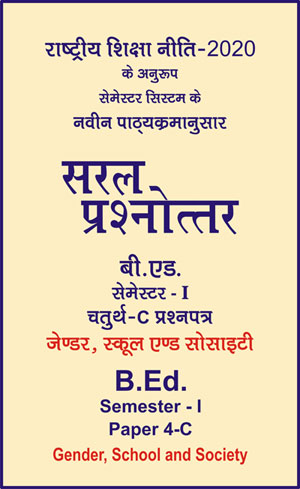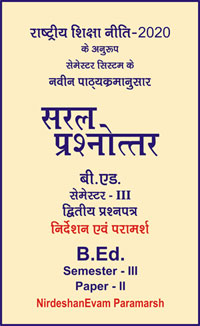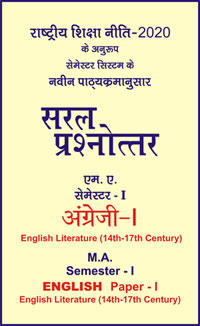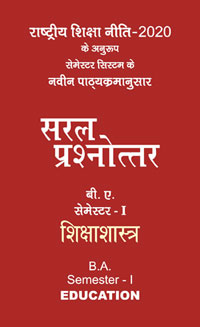|
बी एड - एम एड >> बी.एड. सेमेस्टर-1 प्रश्नपत्र-IV-C - जेण्डर, स्कूल एण्ड सोसाइटी बी.एड. सेमेस्टर-1 प्रश्नपत्र-IV-C - जेण्डर, स्कूल एण्ड सोसाइटीसरल प्रश्नोत्तर समूह
|
|
||||||
बी.एड. सेमेस्टर-1 प्रश्नपत्र-IV-C - जेण्डर, स्कूल एण्ड सोसाइटी (अंग्रेजी भाषाा में)
Question- When did the Indian government first adopt the policy of reservation?
Answer -
The government of independent India first adopted the policy of reservation for scheduled castes and tribes in 1950. These reservations were limited to government jobs, higher education institutions and political representation. While the question of reservations for Scheduled Castes and Scheduled Tribes rapidly became a subject of relative consensus, its extension to the third category, the Other Backward Classes, gave rise to frequent debates and frequent controversies. Decentralization efforts through the 73rd and 74th Constitutional Amendment Acts in the early nineties led to the introduction of a fourth category, viz., electoral reservations for women. The debate on reservation continued. The question of identifying economically backward classes among other backward classes, ‘most backward classes and upper castes’, has been raised day by day at the national as well as the state levels. So that they can be made beneficiary of reservations.
As regards the consequences of reservations, the debate was mostly confined to the areas of higher education and government jobs. The debate took a turn when the Women’s Reservation Bill, which proposes to reserve 33 per cent seats in state assemblies and Lok Sabha for women, sparked a fresh controversy among some sections of the general public. The dispute was over..the relevance and magnitude of political representation of mass groups through electoral reservations and that mass groups included affiliated groups as well as the wider society.
|
|||||

 i
i 









